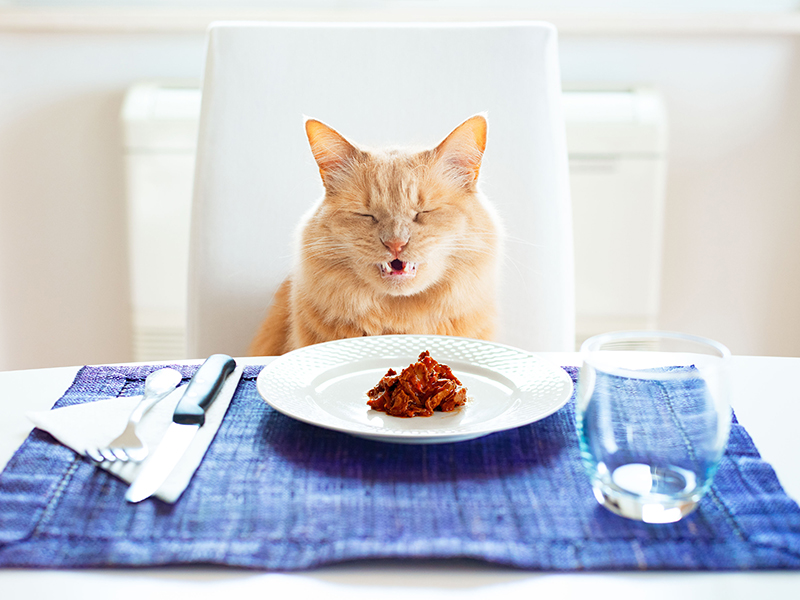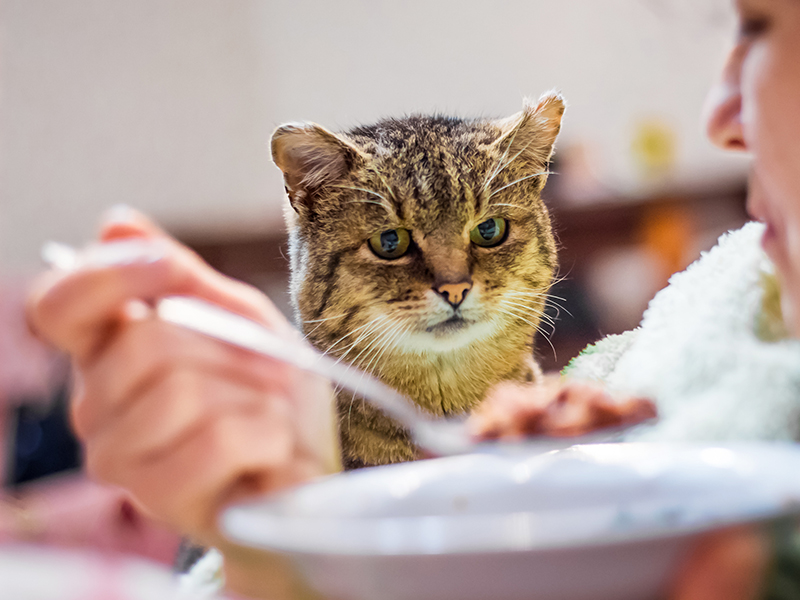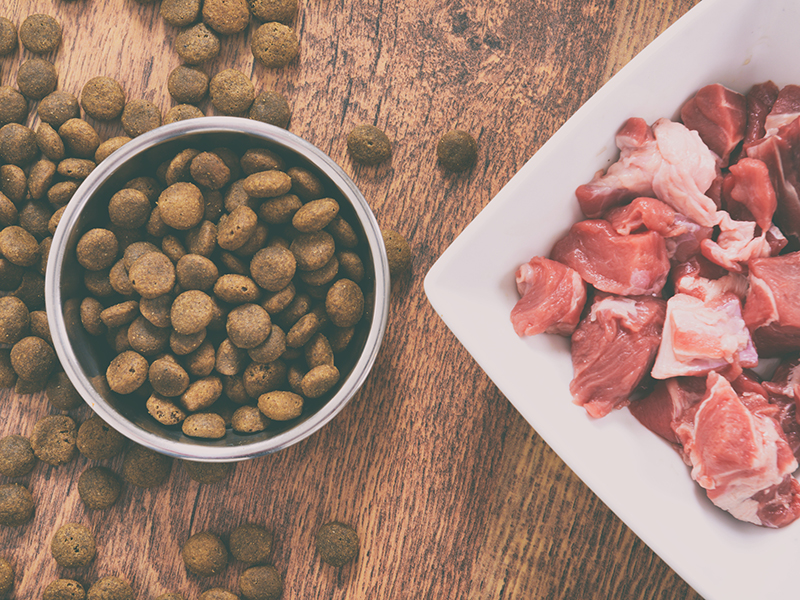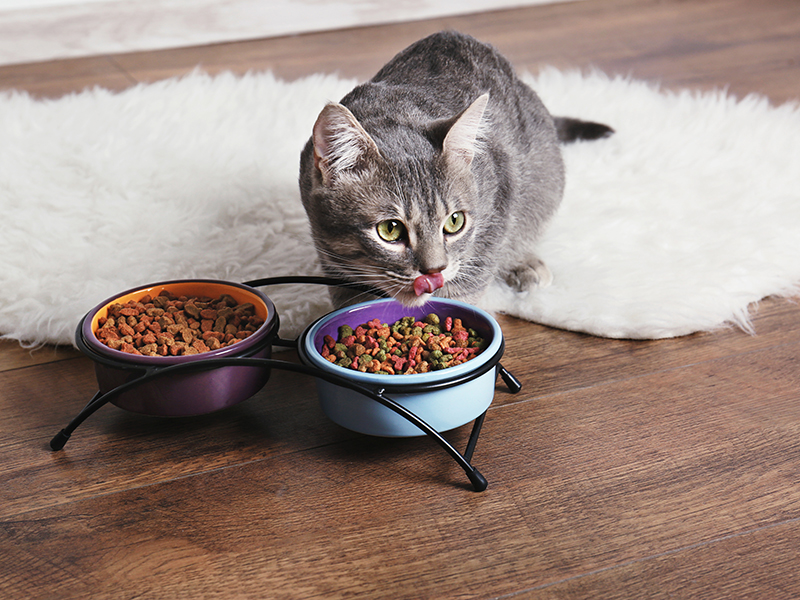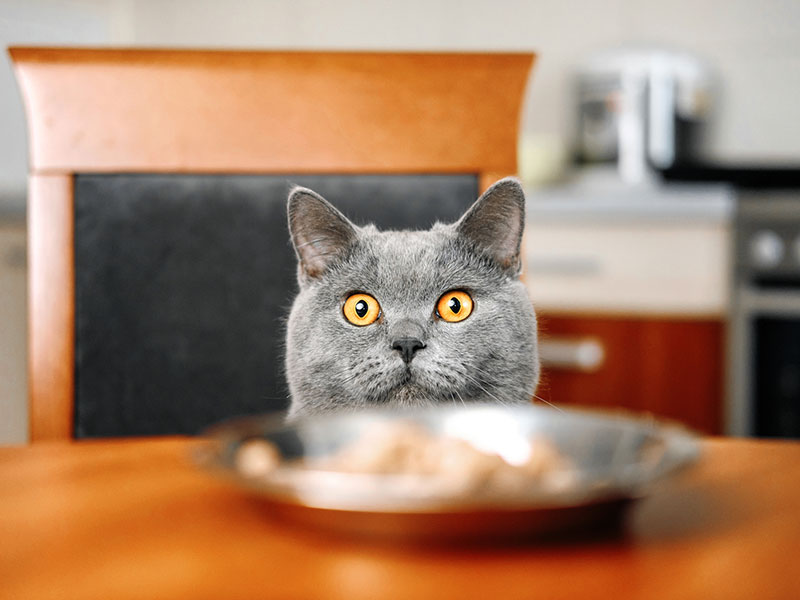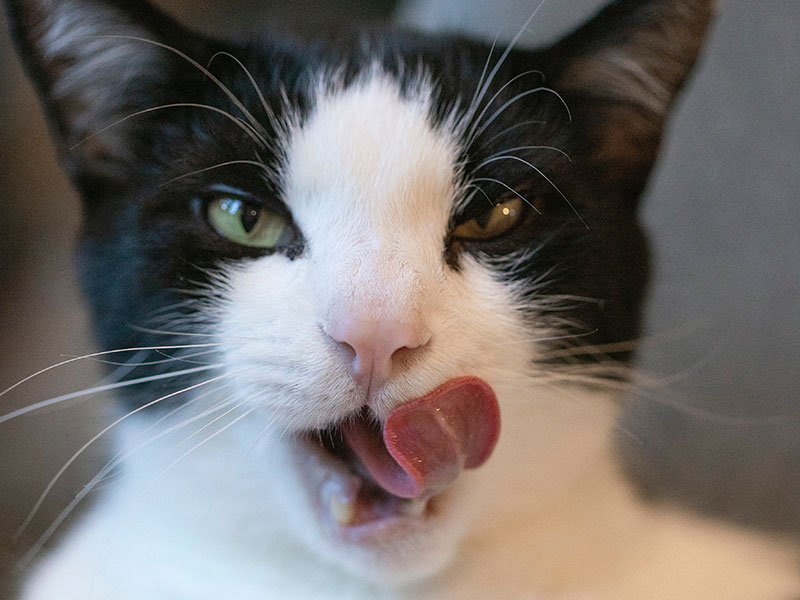Yes, cats are fussy, stubborn, and prone to the occasional hairball or litter tray disaster. But there’s a misinformed belief among many cat owners that it’s ‘normal’ for their pets to refuse food or have difficulties with digestion.
While you can expect your cat to experience periods of increased pickiness at one time or another, this rarely happens without an underlying reason. Most of the time, that cause will be a traceable and easily resolved issue, such as an environmental change or flavor fatigue. But less frequently, refusing to eat can be a symptom of a health problem or major stress trigger.
Here are five potential reasons why your cat might be turning their whiskers up at their food:
Important: If your cat hasn’t eaten anything for 48 hours, or if they’re trying to eat but are unable to swallow or properly digest their food, call your vet!
1. Environmental changes
Cats are among the most habitual of family pets, meaning they appreciate a regular schedule and can take weeks or months to adjust to changes in their local environment. Cats tend to feel more confident and happy when living in households with consistent daily routines. This allows them to establish their territory and sleep schedule, and know that their safety and food-availability isn’t under threat.
If a cat is particularly attached to certain habits, then changes can trigger mental disorders including anxiety and depression, which can then manifest in a refusal to eat. Back in 2011, researchers at Ohio State found that otherwise healthy cats may display symptoms of illness, including increased hairballs and food avoidance, when their routine is disrupted.
Sometimes triggers will be obvious to owners, such as the introduction of a new family member—person or pet—or a difference in the amount of time you spend away from home. But in other cases, identifying the change might take some detection skills. Look for novel sights, smells, and sounds, such as a new piece of furniture or barking from a neighbor’s backyard.
If your cat’s recently taken a trip in the car, they may be experiencing the after-effects of motion sickness. Even if they didn’t display symptoms during the journey (look for drooling and gulping), nausea can persist for a while after traveling, which can trigger food avoidance that then becomes a new habit or compulsion. If the journey included a visit to the vet for vaccinations, they may also be having an adverse reaction to their shots, which will commonly cause mild and temporary appetite loss.
2. Flavor fatigue
There’s debate in the scientific community over whether cats can become tired of certain food types and flavors, and therefore appreciate a menu change. Some argue that, as routine-based animals, cats should have no problem encountering the same foods every day of their lives, and all food avoidance is therefore attributable to other problems such as those mentioned in this article.
Others, however, point to the universally agreed fact that cats require food with different nutritional profiles during different stages of their life. The Association of American Feed Control Officials (AAFCO) defines distinct nutritional needs for cats that are growing or lactating, as opposed to those in a general or maintenance life stage. By the same token, it may be possible that a cat’s nutritional needs fluctuate within a life stage, leading to a periodic change in food preferences.
Whatever side of the argument wins out, the fact is that we’re already asking our cats to forgo their real dietary preference (live prey) in favor of processed, pre-prepared meals. The palatability of many brands is determined by a taste test that lasts just a few days and consults small numbers of cats. Often, manufacturers will judge how appetizing their products are through simple comparison techniques such as offering cats a choice of food types and noting their response. Others will simply look to find out whether cats ‘accept’ their food recipe.
These palatability tests may allow manufacturers to demonstrate that cats choose their product over competitors, but they’re not that helpful in determining long term preferences or the possibility of flavor fatigue.
Cats can’t tell us what textures and flavors they really want, and furthermore, the concept of a cat ‘liking’ one food formula over another may not even be totally coherent. But we do know that a cat’s flavor preferences depend on many factors, such as previous exposure to foods, feeding habits, climate, level of activity, cat gender, age, breed, and health condition.
3. Lack of nutrition (in their opinion)
Unlike dogs, cats aren’t usually opportunistic eaters and can be naturally selective about whether they do or don’t consume their food. Intolerances and allergies aside (see #4), if your cat is refusing their dinner, it’s possible that they’re not satisfied with the ingredients in their current recipe.
This may be because their food is genuinely lacking in key nutrients. The processes used to create dried kibble in particular can degrade essential compounds such as taurine from meat, even if the ingredient features heavily in the recipe.
Alternatively, your cat might be coming to their own conclusions. Partly because they prefer their dinner to be moving around before they eat it, felines will often smell food exhaustively in an attempt to judge its freshness and safety. According to a 2001 study, cats use odor as a primary measure of food quality: “If cats find the odor of a certain food more attractive than that of the other, they will consume it exclusively and without tasting the less attractive food.”
When it comes to judging the quality of a meal, however, cats aren’t infallible. Many owners will have stories of their pets getting into things they shouldn’t, and more serious cases of cats eating poisoned rodents and toxic plants, such as Easter lilies, are often recorded. Cats’ judgments can also be easily thrown off by artificial flavoring and concentrations.
So whether or not their food is genuinely healthy, if you see your cat carefully sniffing their bowl before turning it down, they may have judged it to be unfresh, polluted, or not containing sufficient nutrients.
Feeding strategies
Though it can be tempting, don’t play your cat at their own game and attempt to starve them into eating. This can further disrupt their confidence in household schedules and exacerbate their condition—and anyway, cats. always. win.
Instead, try increasing the water content of food (especially if it’s dry kibble), or add a distinctive odor such as the brine from canned fish. If you’re attempting to ween a cat off their favorite unhealthy option, you could create mixtures that taper slowly towards their new food, making the transition less abrupt. Beware putting your cat off both food types with this strategy, however!
Rotating between a few favored brands, not just flavors, works for many. Switching things up every quarter keeps some variety in your cat’s diet while remaining manageable for owners. Trying out different brands may also minimize the development of sensitivities or intolerances to particular formulas.
If nothing seems to be working at all, talk to your vet. They’ll be able to kick things up a gear with appetite-stimulating medications such as mirtazapine, or advice on how to syringe-feed your cat with a liquid diet.
What about homemade? In truth, most cat foods are unable to compete with a home-cooked meal, in the same way that processed human foods won’t match fresh produce for nutritional benefit. Keep portions small, cooked, and supplemented by small amounts of dietary fiber such as sweet potato, vitamins, and fatty acids (Omega). Remember that too many proteins and vitamins can cause their own set of gastrointestinal and systemic issues.
Even if you’re not able to consistently cook for your cat, testing their reaction to a small portion of fresh roast chicken or canned fish will help you diagnose whether or not their avoidance is related to the type of food on offer.
4. Sensitivities and intolerances
Feline food allergies are not uncommon. In fact, Cornell College of Veterinary medicine calls them the third most common type of feline allergy, after fleabite and airborne substance allergies (i.e. dust, pollen, mold, etc.) When it comes to food, cats most often present with allergies to particular proteins, primarily chicken, and can experience itchiness, irritation, vomiting, and diarrhea.
Beyond allergies, however, there’s a whole subset of minor food intolerances that can cause your cat to experience gastrointestinal inflammation. For example, many cats will readily eat dairy products despite being lactose intolerant, and therefore at risk of stomach upset.
When the results of a food sensitivity aren’t immediately visible in the litter tray (gross, I know) it can be easy for owners to assume that there’s no issue. But in cats, symptoms such as skin rashes and fur loss can take weeks to emerge, so it’s possible that your cat is signaling a growing intolerance by refusing a food type, even when there are no obvious signs.
If you do suspect that your cat is struggling to digest a particular protein, try switching to recipes with a small number of whole-food ingredients, and working via a process of elimination. If the offending ingredient is still not easily identifiable, your vet may recommend a novel protein diet, which contains meats and/or carbohydrates that your cat has never encountered before.
5. Vet-worthy conditions
Pay attention if your cat suddenly stops eating, or tries to eat but cannot—especially if you’ve ruled out the four causes above. If they were jumping for their dinner bowl in the evening, but are now avoiding their breakfast, or if they just can’t seem to keep food in their mouth, it may be a sign of an emerging condition or disease.
Many conditions manifest in eating disorders, including gastrointestinal inflammation, infection, organ failure, and cancer. Oral and dental issues like gingivitis or a toothache can also result in a refusal to eat.
Anorexia and compulsive overeating are both diagnosable conditions in cats, and most often occur when there’s damage to a cat’s senses, environmental pressures, or due to neurological injury or degeneration. Stresses such as these can cause a cat’s appetite to become disassociated from their hunger drive, meaning that they either forget to eat or forget that they’ve already eaten.
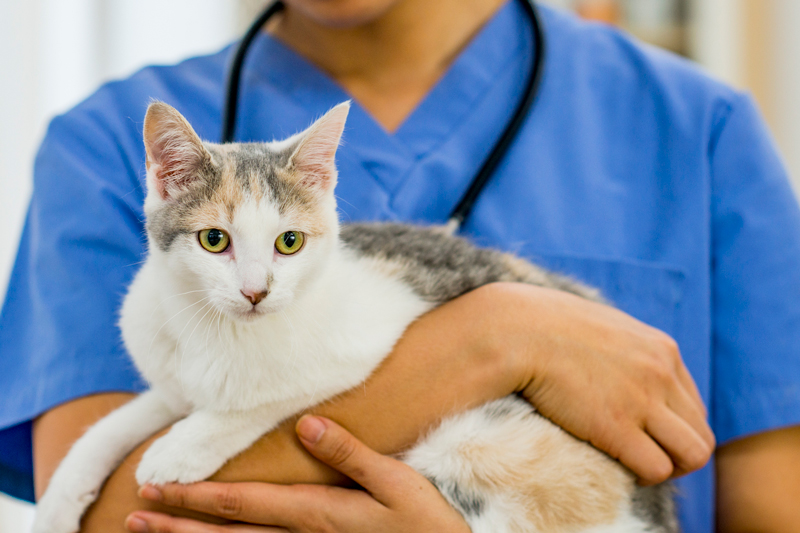
Safety notice! Hepatic lipidosis
Feline fussiness is usually more of a cause for frustration than concern, but if a cat completely avoids or refuses food for more than 48 hours, they can become at risk of a condition called hepatic lipidosis.
Lipidosis is also known as Fatty Liver Syndrome and is thought to be unique to cats. It’s a form of liver failure that occurs when the organ attempts to rapidly process high amounts of fat in the absence of proteins.
If a cat isn’t eating, its body will begin to convert stored fat into energy. As predators, cats aren’t great at this process, and without a normal protein intake, fat can build in liver cells, decreasing liver function to a dangerously low level.
As lipidosis progresses, cats may become highly lethargic and jaundiced, giving a yellow tinge to their eyes and skin. At that point, quick and aggressive treatment is crucial, including invasive procedures such as feeding tubes. But even minor cases of the disease can require weeks of intense nutritional management.
As one of the most common feline liver diseases, it’s not just food avoidance (anorexia) that can trigger liver issues. Ironically, overweight or obese cats are also a high-risk category.
Summary
Cats can be sensitive and picky eaters, but regular food avoidance, vomiting, or diarrhea isn’t normal.
How calm and receptive a cat feels is often tied to the strength of their routine. If daily habits are changed or broken, your cat can take months to fully adjust, including the resumption of regular feeding.
Cats probably don’t ‘like’ food in the same way as humans, and don’t have the same cravings for variety. But they may tire of certain flavorings or recipes, especially if formulas aren’t providing for their nutritional needs.
Feline allergies, intolerances, and sensitivities, can manifest themselves in ways more subtle than vomiting and diarrhea. Consider whether your cat may be sensitive to any common cat food ingredients.

